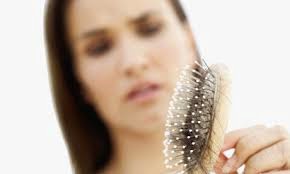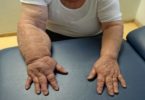
What's in this article?
Hair loss can affect just your scalp or your entire body. It can be the result of heredity, hormonal changes, medical conditions or medications. Anyone men, women and children can experience hair loss.
Baldness typically refers to excessive hair loss from your scalp. Hereditary hair loss with age is the most common cause of baldness. Some people prefer to let their baldness run its course untreated and unhidden. Others may cover it up with hairstyles, makeup, hats or scarves. And still others choose one of the treatments available to prevent further hair loss and to restore growth.
Before pursuing hair loss treatment, talk with your doctor about the cause of the hair loss and the best treatment options.
Every day, every one of us looses some hair. Our body then replaces it with some new strands as part of the many renewal processes that are built into our body systems. As we all age, ‘the reappearance of new hair’ event gradually slows down.
This observable fact is more evident in men than women, whose ‘male-pattern baldness is genetically determined and can begin as early as age 20. For women, hair normally thins after age 50, and considerable hair loss before that age is very rare.
General problems of hair loss: Dandruff, Graying of hair, loosing hair, brittle hair and slow growth of hair are some of the common hair problems that people complain about.
Though most of these problems are natural signs of aging or part of our genetic makeup, there are some simple preventative measures and home remedies that may help some of these hair complaints.
FACT ABOUT HAIR
- Typically, hair grows an average of an inch every two months.
- The average head can shed up to 100 of its 100,000 hairs every day.
INDICATION OF HAIR LOSS
Hair Loss generally is noticed in one of two-ways.
- With common pattern baldness, the loss is gradual. It can start as early as puberty, or very late in life.
- Sudden loss of hair, or loss in clumps usually indicates a different problem. This type of symptom could be caused by a number of factors, including hormonal changes, medications, thyroid problems, among others.
- Male pattern baldness typically starts by causing the hairline to recede in the center of the forehead. A bald spot may then form on the top of the head, towards the back and center. Eventually almost all the hair on the top of the head will be lost. This leaves the hair on the sides and back forming the notorious horseshoe pattern. By this stage, hair loss will be very difficult to treat with medications. A hair transplant may be a good option at this point, though they can be expensive.
- Female pattern baldness results in a more evenly spread out thinning of hair. Women will notice an increased rate of hair loss. This will most likely be noticed on pillows, in the shower, hairbrushes, or even vacuum brushes. It is impossible to count the number of hairs being lost per day, but women will notice the thinning and loss of hair around the same time. Some women who have curly or thick hair may not notice the change as early. Skin and hair color also determine how easily the thinning is noticed. Someone who has light hair and dark skin will notice balding much sooner than most.
SELF-CARE REMEDY TIPS FOR HAIR LOSS
- Massage the scalp with 2-3 drops of essential oil or a good vegetable oil. Massage well into the scalp so that the oil gets into deep roots of hair. Wrap the hair in plastic wrap and place a warm towel around it. Leave it for 2 to three hours or overnight. Shampoo the hair with a mild shampoo. Practicing this at regular basis would help your hair pores get rejuvenated.
- Eat a handful of white sesame seeds every morning. One handful of these small seeds contains about 1,200 mg. of calcium and magnesium to ignite the required nourishments of your scalp not to loose hair.
- Take some yogurt everyday (unless you are allergic to milk).
- Rinse hair with a mix of apple cider vinegar tea to help hair grow.
- Mix little warmer castor and almond oil and massage over scalp at least once a week.
- Grind lime seeds and black pepper in equal number in some water and apply on the scalp at regular intervals.
- Scrub the bald portion with onions till it becomes red. Then applying honey, scrub the scalp once a day.
- Massage almond oil on scalp 2 to 3 times a day. Further hair loss will stop by doing this practice.
- Massage coconut milk or Aloe Vera gel into the scalp and hair. Leave it for ½ hour, and then rinse with warm water. Repeat 3 times a week.
- Massage honey with egg yolk into the scalp and hair. Leave for a 1/2 hour, then rinse to prevent hair loss.
What are causes of hair loss?
Because there are so many types of scalp hair loss, finding the cause can be challenging. This review will cover the most common causes of hair loss occurring on normal scalp skin. The medical term for hair loss is alopecia.
Most hair loss is not associated with systemic or internal disease, nor is poor diet a frequent factor. Hair may simply thin as a result of predetermined genetic factors and the overall aging process. Many men and women may notice mild physiologic thinning of hair starting in their 30s and 40s. Life vicissitudes, including illness, emotional trauma, protein deprivation (during strict dieting), and hormonal changes like those in pregnancy, puberty, and menopause may cause a reversible hair loss.
Several health conditions, including thyroid disease and iron deficiency anemia, can cause hair loss. While thyroid blood tests and other lab tests, including a complete blood count (CBC), on people who have ordinary hair loss are usually normal, it is important to exclude underlying causes in sudden or severe hair loss. Such basic health screening can be done by a family physician, internist, or gynecologist. Dermatologists are doctors who specialize in problems of skin, hair, and nails and may provide more advanced diagnosis and treatment of hair thinning and loss. Sometimes a scalp biopsy may be taken to help in diagnosis of severe or unexplained hair loss.
Although many medications list “hair loss” among their potential side effects, most drugs are not likely to induce hair loss. On the other hand, cancer chemotherapy and immunosuppressive medications commonly produce hair loss. Complete hair loss after chemotherapy regrows after six to 12 months.
GENERAL TIPS TO TAKE CARE OF HAIR FROM LOSS
- Eating a balanced, healthy diet is important for a lot of reasons, and it really benefits your hair. And don’t forget to treat your hair well. For example, some doctors recommend using baby shampoo, shampooing no more than once a day, and lathering gently.
- Don’t rub your hair too vigorously with a towel, either. Many hair experts suggest you consider putting away the blow dryer and air-drying your hair instead. If you can’t live without your blow dryer, try using it on a low heat setting.
- Style your hair when it’s dry or damp. Styling your hair while it’s wet can cause it to stretch and break. And try to avoid teasing your hair, which can also cause damage. Finally, be careful when using chemicals – such as straightness or color – on your hair.







